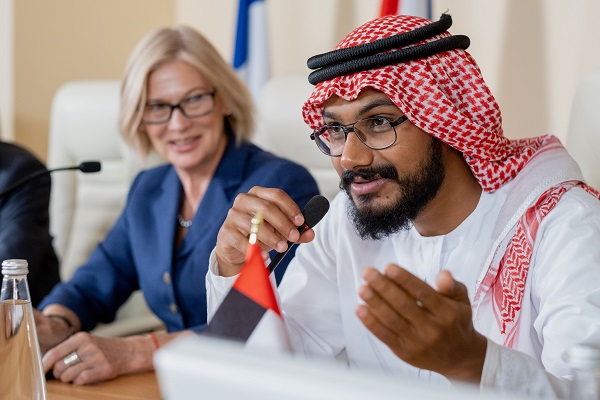
What is Proliferation and Proliferation Financing?
Along with the risk assessment pertaining to money laundering and financing of terrorism, it is obligatory on the part of DNFBPs to assess the risk associated with “proliferation financing”.
Accordingly, it is critical to understand what the word “proliferation” means and how “proliferation financing” is a threat to the DNFBPs and society as a whole.
- WMD (Weapons for Mass Destruction) Proliferation refers to the manufacture, acquisition, possession, development, export, trans-shipment, brokering, transport, transfer, stockpiling, or use of nuclear, chemical, or biological weapons and their means of delivery and related materials (including both Dual-Use technologies and goods used for non-legitimate purposes).
- Financing of Proliferation or Proliferation Financing (‘PF’) refers to the risk of raising, moving, or making available funds, other assets or other economic resources, or financing, to persons or entities for purposes of WMD proliferation, including the Proliferation of their means of delivery or related materials.
There are 3 stages of PF:
- Program fundraising
- Disguising the funds
- Procurement of proliferation-sensitive materials and technology
North Korea and Iran are subject to Targeted Financial Sanctions (‘TFS’) related to WMD proliferation, as these countries are a global threat because of their efforts to develop illegal WMD programs and capabilities.
Proliferation Financing Risk
As mentioned above, DNFBPs are required to assess and adopt the measures to mitigate the “proliferation financing risk”.
Proliferation Financing Risk refers to the potential breach, non-implementation, or evasion of the TFS obligations pursuant to United Nations Security Council Resolutions relating to the prevention, suppression, and disruption of the Proliferation of WMD and its financing.
PF Risk Assessment as part of AML/CFT Policy
For effective assessment of PF risk, DNFBPs need to understand the following aspects first:
1. Proliferation Financing Threats
Threat refers to persons and entities that have previously caused or have the potential to evade, breach, or exploit a failure to implement TFS related to Proliferation. Key Proliferation and PF threats include countries like North Korea and Iran, along with terrorist groups who are always assumed to be interested in nuclear weapons and radiological materials.
2. Proliferation Financing Vulnerabilities
Vulnerability refers to matters that may facilitate the breach, non-implementation, or evasion of TFS related to Proliferation. Vulnerabilities may include features of a particular sector, a financial product, or a type of service that make it attractive for a person or entity engaged in the breach, non-implementation, or evasion of TFS related to Proliferation.
PF vulnerabilities may be based on factors such as business structure or sector (banking or insurance), products or services (virtual assets or money transfer services), customers and transactions (customers from high-risk jurisdictions like Iran).
To identify the PF vulnerabilities, DNFBPs should consider the international reports on PF typologies and the sectoral reports on PF issued by UAE authorities.
3. Proliferation Financing Consequences
Consequence refers to the outcome where funds or assets are made available to proliferators, which could be used to procure the materials, items, or systems for developing illicit nuclear, chemical, or biological weapon systems, causing the threat of use of WMD.

Proliferation Finance Risk Assessment
DNFBPs should document their understanding and assessment of PF risk. The approach for PF risk assessment should be commensurate with DNFBP’s nature and size of business. DNFBP’s PF risk assessments shall include the following categories:
a. Geographic Risk:
DNFBPs should identify and assess their business locations, where it conducts business and their target markets.
As mentioned above, North Korea and Iran are the major source of PF risk. However, it is pertinent to note that geographic risk is not limited to these countries only, as such countries and terrorist groups depend on global networks, such as using neighbouring countries to route the money or procure the proliferation materials.
b. Customer Risk:
Customer risk may arise from the following aspects:
- Sanctioned – If the customer is an UN-sanctioned person or entity.
- Entities owned by UN-sanctioned persons – During the CDD process, DNFBPs must identify the UBO of such entities and screen them against the TFS list.
- Customer business activities – Customers producing proliferation-sensitive goods can pose PF risk on DNFBPs.
- Geographic – DNFBPs shall assess customers’ locations (residence and business place).
c. Product and Service Risk:
DNFBPs shall assess the risk that their products or services may be exploited for proliferation financing in any way – either to obtain funding for WMD activities or to disguise the funds or to obtain proliferation-sensitive goods.
Measures to prevent and mitigate Proliferation Financing Risk
1. DNFBPs shall identify the red flags related to proliferation financing and shall perform the Enhanced Due Diligence (‘EDD’) on the customers categorized as high-PF risk, considering such red flags.
2. As part of EDD, DNFBPs shall collect the information regarding –
- Expected end users of any goods or services
- Customer’s expected exposure to high-risk jurisdictions
- The ultimate beneficial owner of the entity.
3. DNFBPs should also inquire about and check the TFS policy of the customer.
4. Before conducting any business transaction with such high-PF risk customers, approval from senior management shall be obtained.
5. DNFBP shall have a policy in place to restrict undertaking any transaction with the customer hailing from countries listed for TFS for proliferation financing (i.e., North Korea and Iran).
6. If any possible PF activities are envisaged for a customer/transaction or the customer is listed as sanctioned, DNFBP shall freeze the funds of the customer and should immediately report the same on goAML Portal.
Sanction Evasion and Red Flags for Possible PF Activities
- Dealings, directly or through a client of DNFBP’s client, with sanctioned countries or territories where sanctioned persons are known to operate.
- The use of shell companies through which funds can be moved locally and internationally by misappropriating the commercial sector.
- Dealings with sanctioned goods or Dual-Use goods.
- Identifying documents (e.g., bill of lading, sales purchase agreement, etc.) that seemed to be forged or counterfeited.
- Identifying tampered or modified documents with no apparent explanation, especially those related to international trade.
- The activity developed or financed does not relate to the original or intended purpose of the entity. For example:
- For companies, they are importing high-end technology devices which are not in accordance with their trade license.
- For a non-profit organization, they are exporting communication devices, but they are an entity aimed to provide humanitarian aid.
- Complex commercial or business deals that seem to be aiming to hide the final destiny of the transaction or the good.
- Complex legal entities or arrangements that seem to be aiming to hide the beneficial owner.
Survey by Executive Office for Control & Non-Proliferation (EOCN)
Executive Office for Control & Non-Proliferation (‘EOCN’) has recently released a survey to know the awareness about the TFS and Sanction Evasion amongst the reporting entities in UAE. As suggested by EOCN, the survey is performed just to know the understanding of the businesses on the subject and not to investigate the compliance status of the reporting entity. These survey includes questions such as under:
- On which countries, the UNSC has imposed the TFS related to Proliferation Financing;
- DNFBPs shall freeze the funds of the customer under what circumstances;
- For what all parties, a DNFBP is required to carry out screening;
- Who all should be made aware about PF guidelines issued by EOCN;
- Whether DNFBPs have identified the red-flags related to PF risk;
- Whether DNFBPs are aware about the techniques used by the proliferators to carry out PF and evade sanctions;
- Understanding related to Sanctions Evasion Technique;
- On what all factors, DNFBPs shall carry our PF risk assessment;
- What are Compliance Officer’s responsibilities around PF-risk mitigation;
- Whether DNFBPs have PF related policies in place and whether trainings are conducted on the said subject.
AML UAE at your service
As required by the UAE authorities and the United Nations Security Council, DNFBPs need to have a PF policy in place to assess and mitigate risk related to proliferation financing, suggested to be integrated with the existing AML/CFT Policy. Here, we may help you understand what PF is, its risk assessment process, assess your existing policy on Proliferation Financing and align it with the UAE and international requirements.
Our timely and accurate AML consulting services
For your smooth journey towards your goals
Our recent blogs
side bar form
Add a comment
Share via :
FAQs About Proliferation and Proliferation Financing
About the Author
Pathik Shah
FCA, CAMS, CISA, CS, DISA (ICAI), FAFP (ICAI)
Pathik is a Chartered Accountant with more than 25 years of experience in compliance management, Anti-Money Laundering, tax consultancy, risk management, accounting, system audits, IT consultancy, and digital marketing.
He has extensive knowledge of local and international Anti-Money Laundering rules and regulations. He helps companies with end-to-end AML compliance services, from understanding the AML business-specific risk to implementing the robust AML Compliance framework.



